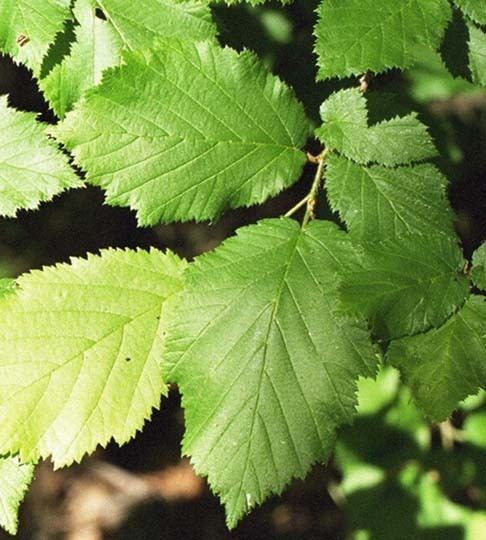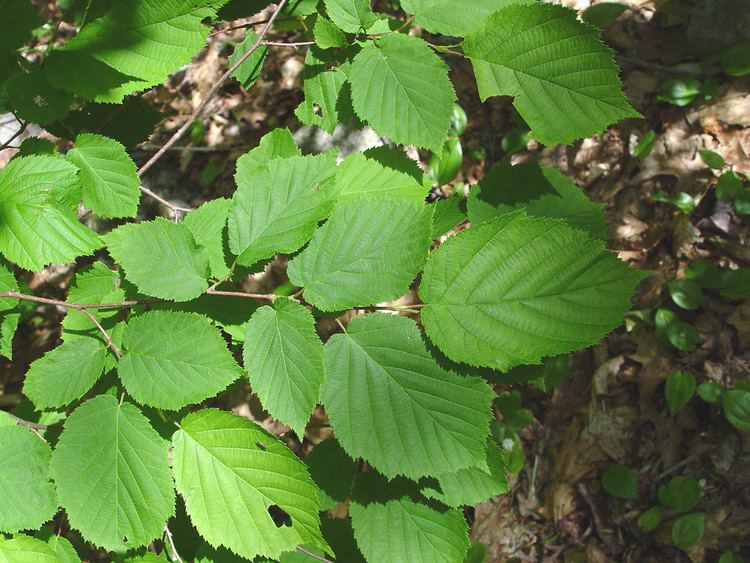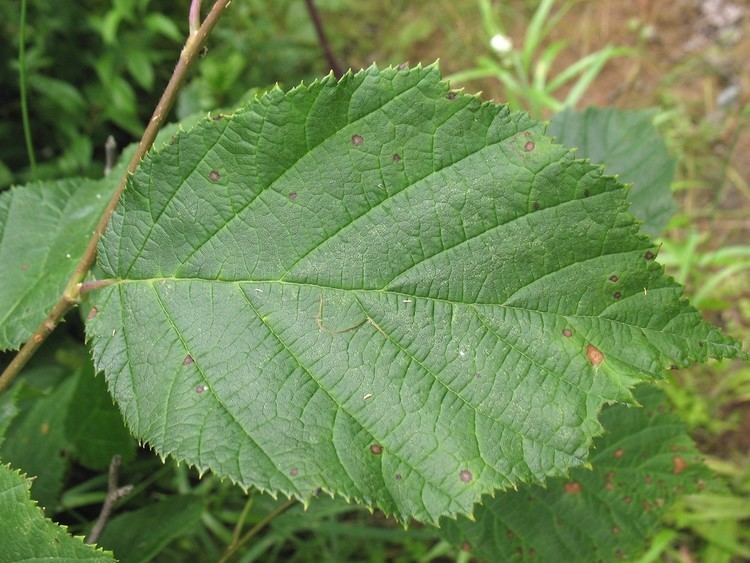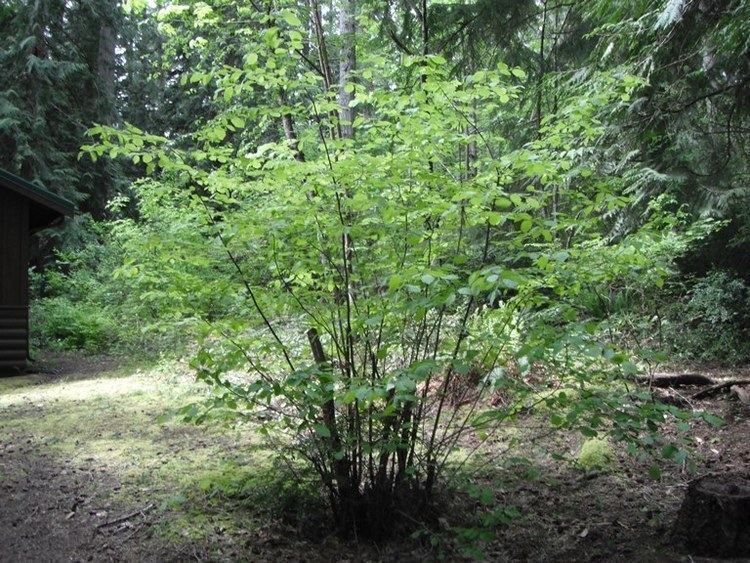Scientific name Corylus cornuta Iron 3.12 mg (per 100 g) Rank Species | Genus Corylus Protein 14.89 g (per 100 g) Higher classification Hazel | |
 | ||
Energy 628.3 Calories (per 100 g) Similar Thimbleberry, Bitter‑berry, Salmonberry, Saskatoon, Shellbark hickory | ||
Corylus cornuta (Beaked Hazel) is a deciduous shrubby hazel found in most of North America, from southern Canada south to Georgia and California. It grows in dry woodlands and forest edges and can reach 4–8 metres (13–26 ft) tall with stems 10–25 centimetres (3.9–9.8 in) thick with smooth gray bark. The leaves are rounded oval, coarsely double-toothed, 5–11 centimetres (2.0–4.3 in) long and 3–8 centimetres (1.2–3.1 in) broad, with hairy undersides. The flowers are catkins that form in the fall and pollinate in the following spring.

Corylus cornuta is named from its fruit, which is a nut enclosed in a husk with a tubular extension 2–4 centimetres (0.79–1.57 in) long that resembles a beak. Tiny filaments protrude from the husk and may stick into, and irritate, skin that contacts them. The spherical nuts, which are surrounded by a hard shell, are edible.

There are two varieties:

The seeds are dispersed by jays and rodents such as red squirrels and least chipmunks. Although C. cornuta is somewhat shade tolerant, it is more common in open forests than denser ones. Fire kills the above-ground portion of the shrub, but it resprouts fairly readily after fire, and in fact American Indians in California and Oregon used fire to encourage hazelnut growth, as they used hazelnuts for food, baskets, medicine, and other purposes.

